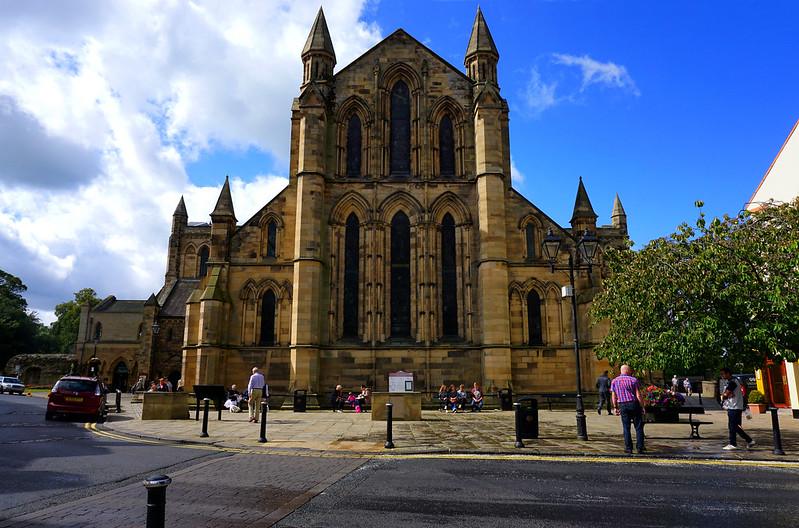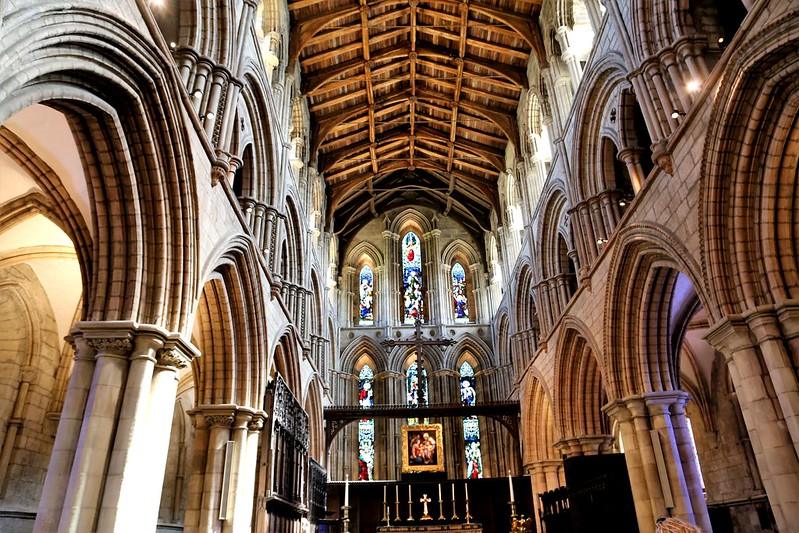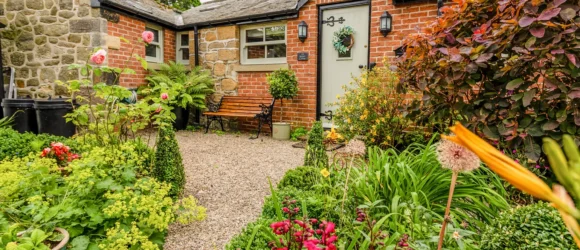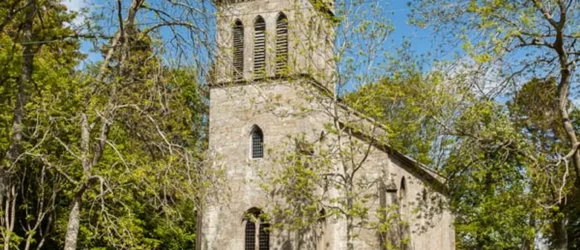Nestled in the picturesque town of Hexham, Northumberland, Hexham Abbey stands as a testament to the region's rich historical tapestry. With roots tracing back to the 7th century, this remarkable structure has witnessed centuries of change, serving as a place of worship, community gathering, and cultural heritage.
As visitors explore its hallowed halls, they are not only stepping into a building but also into a narrative that intertwines faith, architecture, and local history. This article delves into the multifaceted significance of Hexham Abbey, highlighting its historical importance, architectural features, cultural relevance, and practical tips for visitors.
The Rich History of Hexham Abbey: A Timeless Landmark
Hexham Abbey's origins can be traced back to the establishment of a monastery by St. Wilfrid in 674 AD. This early Christian site was pivotal in the spread of Christianity in Northumberland and became a centre for learning and culture.
Over the centuries, the abbey has undergone numerous transformations, particularly during the Norman Conquest, when it was rebuilt in the Romanesque style. The abbey's historical significance is further underscored by its role during the turbulent times of the English Civil War when it served as a refuge for those seeking solace amidst conflict.

The abbey's historical narrative is enriched by its connection to notable figures, including the Venerable Bede, who is believed to have visited the site. The abbey's archives contain invaluable records that provide insights into the ecclesiastical and social history of the region.
As a result, Hexham Abbey is not merely a building; it is a repository of stories that reflect the evolution of faith and community in Northumberland. In the 19th century, the abbey underwent significant restoration, which aimed to preserve its historical integrity while accommodating the needs of a growing congregation.
This restoration was crucial in maintaining the abbey's status as a place of worship and community engagement. Today, Hexham Abbey continues to be an active parish church, bridging the gap between its storied past and the present. The abbey's historical significance is recognized not only locally but also nationally, as it is designated as a Grade I listed building.
This status highlights its architectural and historical importance, ensuring that future generations can appreciate its legacy. As visitors walk through its doors, they are invited to reflect on the centuries of faith, resilience, and community that have shaped Hexham Abbey into the landmark it is today.
Architectural Features: A Blend of Styles and Eras
Hexham Abbey is a stunning example of architectural evolution, showcasing a blend of styles that reflect its long history. The original structure, built in the 7th century, was primarily Romanesque, characterized by its rounded arches and robust stonework.
As the abbey was rebuilt and renovated over the centuries, elements of Gothic architecture began to emerge, particularly in the later additions made during the 12th and 13th centuries. This fusion of styles creates a unique visual narrative that tells the story of the abbey's development.
One of the most striking features of Hexham Abbey is its magnificent west front, adorned with intricate carvings and a large rose window that exemplifies the Gothic style. The detailed stonework, depicting biblical scenes and figures, serves as both an artistic achievement and a didactic tool for the faithful.
Visitors are often captivated by the craftsmanship that has withstood the test of time, reflecting the skill and dedication of the artisans who contributed to its construction. Inside the abbey, the nave is equally impressive, with its soaring ceilings and beautifully crafted wooden beams.
The use of local stone adds to the authenticity of the structure, while the stained glass windows, some dating back to the 19th century, fill the interior with a kaleidoscope of colours. These windows not only enhance the aesthetic appeal of the abbey but also serve to narrate biblical stories, enriching the spiritual experience for worshippers and visitors alike.

The abbey's layout, with its various chapels and spaces for communal gatherings, reflects its dual role as a place of worship and a community hub. The careful consideration of both form and function in its design underscores the importance of Hexham Abbey as a living monument, where history and contemporary life intersect.
As visitors explore its architectural features, they are invited to appreciate the artistry and ingenuity that have made Hexham Abbey a cherished landmark in Northumberland.
Cultural Significance: Hexham Abbey in the Community
Hexham Abbey is not only a historical and architectural gem but also a vital part of the local community. Its role extends beyond that of a religious institution; it serves as a cultural hub that fosters community engagement and social cohesion.
The abbey hosts a variety of events throughout the year, including concerts, art exhibitions, and educational programs, which draw people from all walks of life. These activities not only celebrate the abbey's rich heritage but also encourage a sense of belonging among residents and visitors alike.
The abbey's commitment to community service is evident in its outreach programs, which aim to support those in need. From food banks to charity events, Hexham Abbey plays an active role in addressing social issues and providing assistance to vulnerable populations.
This dedication to service reinforces the abbey's mission as a place of compassion and support, embodying the values of love and community that are central to its faith. Moreover, Hexham Abbey serves as a venue for significant cultural events, such as the annual Hexham Abbey Festival, which showcases local talent and promotes the arts.
This festival not only highlights the abbey's historical significance but also strengthens the cultural fabric of the town. By providing a platform for artists and performers, the abbey fosters creativity and encourages community participation, making it a cornerstone of Hexham's cultural identity.
The abbey's cultural significance is further enhanced by its role as a site of pilgrimage and reflection. Visitors from around the world come to experience its serene atmosphere and connect with its spiritual heritage. This influx of visitors contributes to the local economy and promotes tourism, ensuring that Hexham Abbey remains a vibrant and integral part of the community for generations to come.
Visiting Hexham Abbey: Tips for an Enriching Experience
For those planning a visit to Hexham Abbey, there are several tips to ensure a fulfilling experience. First and foremost, it is advisable to check the abbey's official website for information on opening hours, special events, and any guided tours that may be available.
Guided tours can provide valuable insights into the abbey's history and architecture, enhancing the overall experience for visitors. Additionally, attending a service or a concert can offer a unique perspective on the abbey's role in the community.
When visiting, take the time to explore the surrounding area, as Hexham is rich in history and charm. The town boasts a variety of shops, cafes, and historical sites, including the nearby Hexham Old Gaol and the beautiful Hexham Abbey Gardens.
A stroll through these areas can complement your visit to the abbey and provide a deeper understanding of the local culture and heritage. Photography enthusiasts will find plenty of opportunities to capture the beauty of Hexham Abbey, both inside and out.
However, it is essential to be respectful of the space, particularly during services or private events. Taking a moment to appreciate the intricate details of the architecture and the serene atmosphere can enhance your connection to this historical landmark.
Lastly, consider participating in one of the abbey's community events or workshops. Engaging with local residents and learning about their experiences can provide a richer understanding of the abbey's significance in the community.
Whether you are drawn by its history, architecture, or cultural offerings, Hexham Abbey promises an enriching experience that resonates long after your visit. Hexham Abbey stands as a remarkable testament to the enduring power of faith, community, and history.
Its rich past, stunning architectural features, and cultural significance make it a must-visit destination in Northumberland. As visitors explore its sacred spaces and engage with the local community, they are reminded of the abbey's role as a living monument that continues to inspire and connect people across generations.
Whether you are a history enthusiast, an architecture lover, or simply seeking a peaceful retreat, Hexham Abbey offers a unique experience that captures the essence of Northumberland's heritage.
Holiday Rentals Ideal for Exploring Northumberland
What other attractions are near Hexham Abbey?
Hexham is a charming market town with several attractions near the Abbey, including:
- Hexham Old Gaol: England's oldest purpose-built prison, now a museum.
- Hexham Market Place: A vibrant area with shops, cafes, and a regular market.
- Tyne Green Country Park: A riverside park perfect for walks and picnics.
- Hadrian’s Wall: The famous Roman wall is a short drive from Hexham.
FAQ’s
What is Hexham Abbey?
Hexham Abbey is a historic church located in the town of Hexham, Northumberland, England. It was originally founded as a Benedictine monastery in 674 AD by St. Wilfrid and has since become one of the most iconic landmarks in Northumberland.
Where is Hexham Abbey located?
Hexham Abbey is located in the town of Hexham, which is in Northumberland, northeast England. The town is situated near the River Tyne and is about 25 miles west of Newcastle upon Tyne.
What is the history of Hexham Abbey?
Hexham Abbey was founded in 674 AD as a monastery by St. Wilfrid, Bishop of York. It was built using stones from the nearby Roman fort of Coria (now Corbridge). Over the centuries, the Abbey has undergone several reconstructions and renovations, particularly in the 12th century and later during the 19th and 20th centuries.
What are the key features of Hexham Abbey?
The Crypt: The crypt, dating back to the original 7th-century church, is one of the oldest parts of the Abbey and a significant example of early Christian architecture.
The Night Stair: A historic stone staircase used by monks, still intact from medieval times.
The Frith Stool: An ancient Saxon stone seat believed to have been used by the early bishops of Hexham.
Stained Glass Windows: The Abbey features stunning stained glass windows, including several Victorian-era designs.
Is Hexham Abbey free to visit?
Yes, entry to Hexham Abbey is free, but donations are welcomed to help with the maintenance and preservation of this historic site. Guided tours may have a fee.
What are the opening hours of Hexham Abbey?
Hexham Abbey is generally open daily to visitors, though hours can vary depending on the time of year and special events. It is recommended to check the Abbey's official website or contact them directly for the most current opening times.
Is Hexham Abbey accessible to visitors with disabilities?
Hexham Abbey aims to be accessible to all visitors. There is wheelchair access to most parts of the Abbey, and accessible restrooms are available. However, some historic features, like the crypt and the night stair, may be challenging to access. Visitors with specific needs are encouraged to contact the Abbey in advance for assistance.
Experience Days Around Northumberland












































